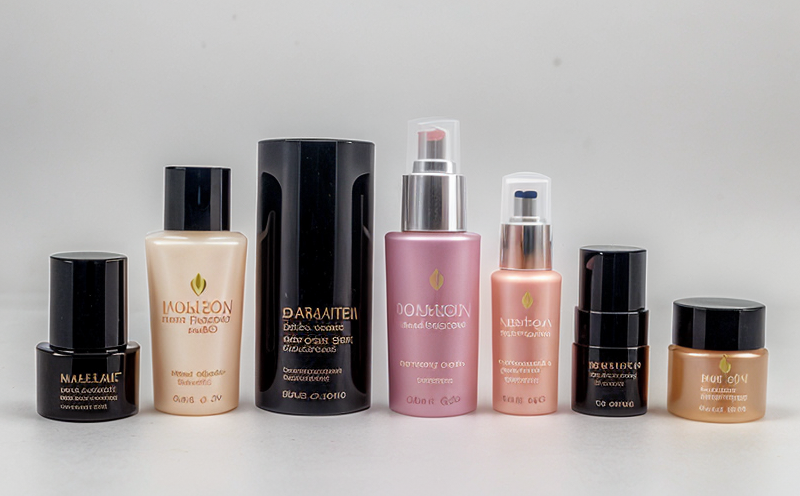Jar Packaging Interaction Testing in Cream Formulations
The cosmetic industry is a highly regulated and competitive sector where ensuring product safety, efficacy, and compliance with international standards is paramount. One critical aspect of this scrutiny involves the interaction between the packaging materials and the cream formulations within them. This service focuses on jar packaging interaction testing in cream formulations, an essential step to prevent potential adverse effects that could arise from leaching or migration of chemicals into the cosmetic product.
Jars are among the most popular packaging types for creams due to their airtight sealing, which helps preserve the product's integrity and shelf life. However, this tight seal can also trap any chemical compounds that may have migrated from the jar itself into the cream. The migration of substances like metal ions or plasticizers is particularly concerning as they can negatively impact both the cosmetic’s quality and consumer health.
The testing procedure involves exposing the jar and its contents to controlled environmental conditions designed to simulate real-world usage scenarios, such as temperature fluctuations, humidity levels, and storage durations. Specimens are then analyzed using advanced analytical techniques like Gas Chromatography-Mass Spectrometry (GC-MS), Fourier Transform Infrared Spectroscopy (FTIR), and Inductively Coupled Plasma Mass Spectrometry (ICP-MS) to identify any trace contaminants.
The goal is not only to meet regulatory requirements but also to enhance product safety and consumer trust. By identifying potential issues early in the development process, manufacturers can make informed decisions about material selection, formulation adjustments, or packaging redesigns. This proactive approach ensures that products reach market with minimal risk of contamination, thereby protecting both brand reputation and public health.
In summary, jar packaging interaction testing is a crucial step in ensuring the integrity and safety of cream formulations. It involves rigorous examination under controlled conditions to detect any unwanted interactions between the container and its contents. This service plays an indispensable role in maintaining compliance with international standards and upholding high-quality practices within the cosmetic industry.
Scope and Methodology
The scope of jar packaging interaction testing encompasses a comprehensive evaluation of how the packaging material interacts with the cream formulation. This includes assessing for any leaching or migration of chemicals that could potentially harm the product’s quality or pose risks to consumers.
- Material Analysis: Identification and quantification of all materials used in the jar, including glass, plastic, metal, and coatings.
- Formulation Analysis: Detailed examination of the cream formulation for its composition and stability under varying conditions.
- Environmental Conditions: Exposure to controlled environmental factors such as temperature (ranging from 4°C to 30°C), humidity levels, and storage durations.
- Analytical Techniques: Utilization of advanced analytical methods like GC-MS, FTIR, and ICP-MS for precise identification and quantification of any detected compounds.
The methodology adheres to international standards such as ISO 17510:2003 (Packaging—Interaction between packaging and contents) and ASTM D6984-16 (Standard Practice for Determining Migration from Packaging into Food and Beverages). These guidelines provide a framework ensuring that the testing process remains consistent, reliable, and compliant with global regulations.
By following this structured approach, we ensure accurate detection of any adverse interactions between the jar packaging and the cream formulation. This not only helps in meeting regulatory requirements but also enhances overall product safety and consumer trust.
Environmental and Sustainability Contributions
The cosmetic industry has a significant impact on environmental sustainability, particularly through its supply chains and end-of-life disposal processes. Ensuring that packaging materials do not contribute to harmful interactions with the contents is just one aspect of this broader challenge.
Jar packaging interaction testing supports sustainable practices by identifying potential contaminants early in the development process. This allows manufacturers to make informed decisions about material selection, which can reduce reliance on non-renewable resources and minimize waste generation.
- Resource Efficiency: By preventing unnecessary chemical leaching into the product, we help reduce the need for repeated manufacturing processes or batch recalls due to quality issues.
- Eco-friendly Materials: The testing process encourages the use of eco-friendly packaging materials that are less likely to interact adversely with the cosmetic contents. This promotes a circular economy approach where waste is minimized and resources are reused effectively.
- Consumer Education: Ensuring product safety through rigorous testing helps build consumer confidence, leading to reduced instances of product returns or complaints. This aligns with broader sustainability goals by fostering responsible consumption patterns.
In conclusion, jar packaging interaction testing is not only a technical necessity but also an important step towards promoting environmental stewardship and sustainable practices within the cosmetic industry.





